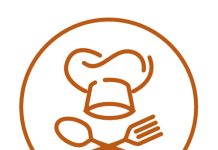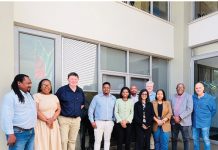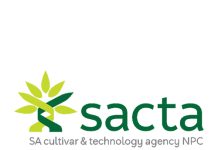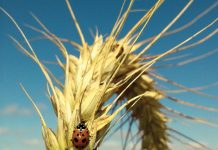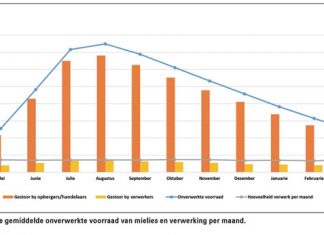

Dr Godfrey Kgatle, research coordinator, Grain SA
WeedSmart is an Australian industry initiative acting as a singular voice to improve on-farm weed management approaches and to ensure long-term sustainability of herbicides and seed traits. Does South Africa need the same kind of initiative?
The local situation
Local structures that support industry and producers with crucial knowledge on herbicide resistance include the South African Herbicide Resistance Initiative (SAHRI) and the Herbicide Resistance Action Committee (HRAC). SAHRI was established in 2012 at the University of Pretoria as an independent platform to investigate herbicide resistance cases. The SAHRI team is currently taking the lead on identifying and monitoring Palmer amaranth (Amaranthus palmeri) occurrence and spread in South Africa. Palmer amaranth was first identified in South Africa in 2018 from the Northern Cape, and has also since been detected in Limpopo and North West. Producers should be very concerned about this weed and related species as they are extremely difficult to control and known to be resistant to a variety of herbicide groups.
The global HRAC is an international body founded by the agrochemical industry to provide comprehensive information about weed resistance and best practices to protect crop yields by preventing herbicide-resistant weeds. In South Africa, a local HRAC meets regularly to discuss current weed resistance concerns. The committee consists of members representing various industries and the research community. The HRAC also undertakes to share information through participating organisations as needed. While HRAC SA creates the network where concerns are raised, SAHRI, universities and the Agricultural Research Council (ARC) conduct the experiments to confirm whether resistance of weeds to herbicides is developing. If confirmed, outcomes are shared with government and industry associations (HRAC SA and CropLife SA communicate with companies) as well as producers (through popular publications, farmer days and training).
Various public and private institutions are actively involved with weed research and extension. In the public sector, the ARC, the Western Cape Department of Agriculture, Stellenbosch University and the University of Pretoria are among the research institutions with dedicated capacity for herbicide resistance screening, weed control and alternative options, training as well as extension.
The Australian WeedSmart model
WeedSmart has a national communications team as well as regional extension teams in the western, southern and northern growing regions of Australia. It is the industry voice ensuring that clear, consistent and science-backed information in terms of weed control is shared with producers and advisors. WeedSmart is also responsible for a national stewardship campaign to encourage attitudes and actions to minimise crop weeds and sustain herbicide use. To achieve this, integrated control tactics (an approach advocated for by industry and the research community alike and very familiar to producers) were summarised into the ‘Big 6’ to optimise weed control and prevent the build-up of herbicide resistance.
The WeedSmart Big 6
- Rotate crops and pastures: Diverse cropping systems can lower the weed seed bank, and facilitate the use of different chemicals, thereby reducing the pressure for weeds to develop resistance.
- Increase crop competition: High population densities and narrow rows increase competition for resources and can suppress weed growth within the season.
- Optimise spray efficacy: Optimal application of products to ensure target weeds are killed.
- Mix and rotate herbicides: Use chemicals with different modes of action to delay resistance build-up.
- Stop weed set: Aim to control weeds throughout and between seasons and monitor for survivors.
- Implement harvest weed seed control.
Harvest weed seed control (HWSC) systems have been in use in Australia for several years as an end-of-season approach to targeting weed seed production. Weed seeds are killed as they pass through the combine to prevent those seeds from entering the soil seed bank. In January 2023, Prof Michael Walsh presented workshops on HWSC systems in the Western Cape. His talks were facilitated through the Western Cape Department of Agriculture. The information presented below is a summary of the workshop.
Harvest weed seed control
In Australia, controlling weeds at the end of the season became necessary as more weeds were able to survive up to maturation due to herbicide resistance. HWSC systems were specifically developed and optimised for controlling ryegrass in wheat production systems and have had significant success in reducing various weed seed banks in wheat fields. Herbicide-resistant ryegrass populations occur across the wheat-producing regions of Australia, and significant effort is put into finding alternative control options, as well as to prevent complete resistance of populations to sustain herbicide use.
The HWSC systems comprise of the following:
- Chaff cart: A cart is linked to the back of the harvester to collect weed seeds. The chaff can then be grazed, baled or burnt.
- Glenvar Bale Direct System: A baler is added to the back of the harvester to collect weed seeds. Bales can be used.
- Narrow windrow burning: Chaff and straw residue are concentrated during harvesting and then burnt to kill weed seeds.
- Chaff tramlining and chaff lining: Creates a poor environment for weed emergence as chaff material is concentrated into narrow rows. The material can then be grazed, but care should be taken as mycotoxins may occur in residue.
- Impact mills: A highly effective chaff processing system, with no need for post-harvest operations. As the only system that fits with conservation agriculture (CA) practices, this approach holds great potential for the Western Cape where CA practices are implemented on most farms.
Research into adapting HWSC for crops such as soybeans and rice has shown potential for these systems to be useful in reducing weed populations, but factors such as the weed species and its growth parameters need to be considered.
Is HWSC the ultimate answer?
Unfortunately, no. Although Australian producers have seen significant success using HWSC to reduce weed densities, it still needs to be used as part of an integrated control system (i.e. WeedSmart Big 6). Low weed densities are the best insurance against herbicide resistance, and efforts should take place within seasons but also between seasons to keep weed densities low. It should also be said that even when weed densities are low, weed control is still necessary. Depending on the system, significant start-up costs may be needed to enable the HWSC system. Return on investment over multiple years and avoidance of resistance build-up need to be taken into the equation when considering these systems.
Next frontier in weed control
The next goal for weed research is in-crop site-specific weed control to identify and control weeds within the growing season and across large-scale cropping systems. This approach has the potential to reduce the need for herbicides, while also adequately controlling weed emergence. Developments in artificial intelligence make it possible to not only differentiate between weeds and crops at early growth stages, but also to accurately identify weeds and then control only those plants identified as weeds. Alternative site-specific control options are also needed (i.e. not herbicides) to control weeds and decrease reliance on herbicides. Such solutions already exist, like robots employing laserweeding to exercise precision weed control. Unfortunately, these solutions come at a hefty cost and may not be accessible to many producers.
Where to next for South Africa?
As a country, we can pride ourselves on the calibre of researchers within public and private institutions. Unfortunately, weed scientists have become few and far between and significant investments are needed to not only ensure sufficient capacity is available to address weed research, but also that sufficient resources are allocated towards this field. It is necessary to keep an eye on ryegrass in the Western Cape and KwaZulu-Natal, as well as common pigweed (misbredie) in the summer grain production regions.
We need to know which weed species are getting more and more difficult to control, and we need enough funds and capacity to keep an eye on it all and to communicate all of it. Focus should be placed on optimal control, as well as alternatives to herbicides and to amplify the voices that are already sharing critical information.
To get in touch with the research community for advice or resistance screening, contact Dr Miekie Human on 067 016 9493 or send an email to miekie@grainsa.co.za. Alternatively contact Dr Godfrey Kgatle on 079 489 5966 or send an email to godfrey@grainsa.co.za.



